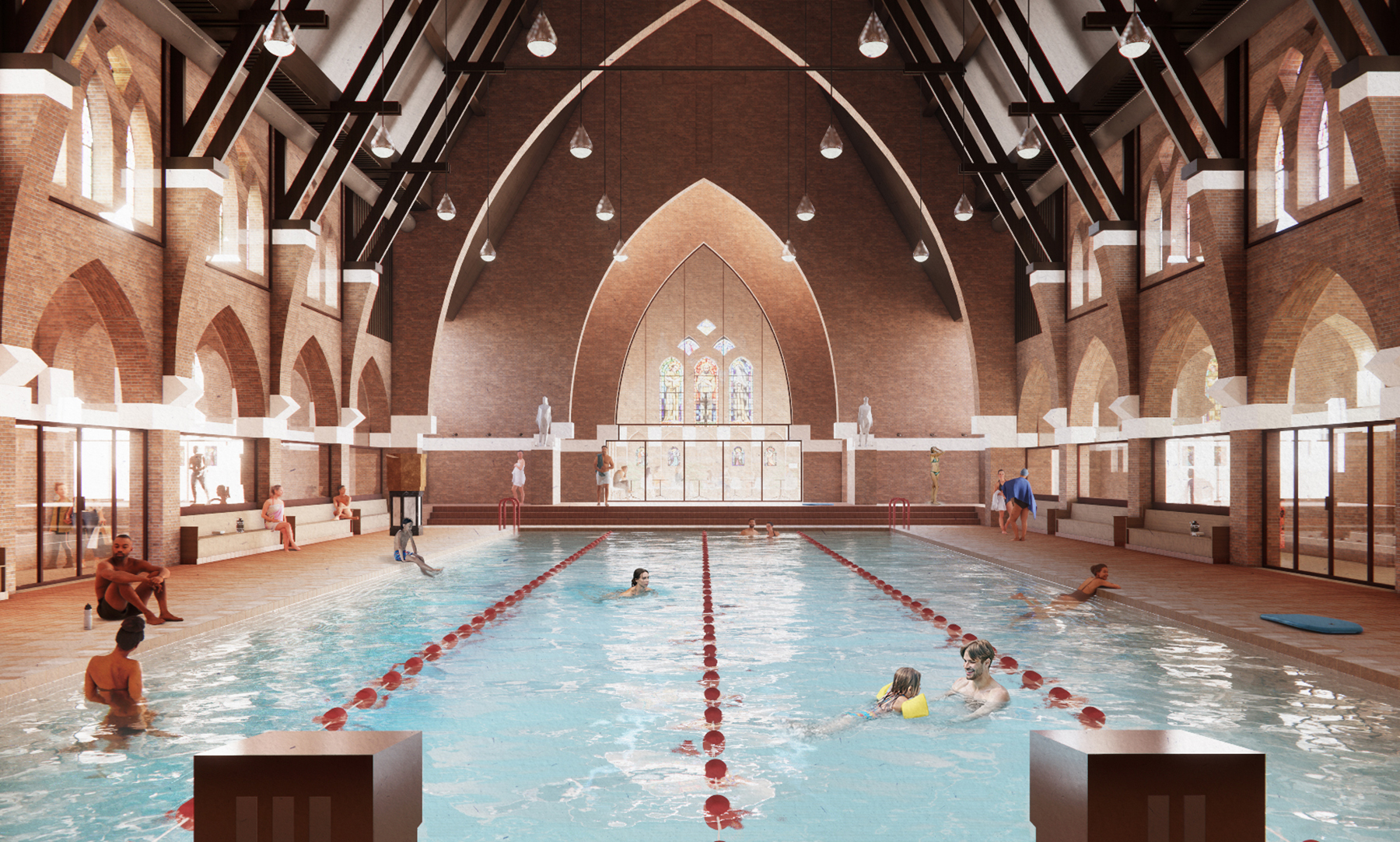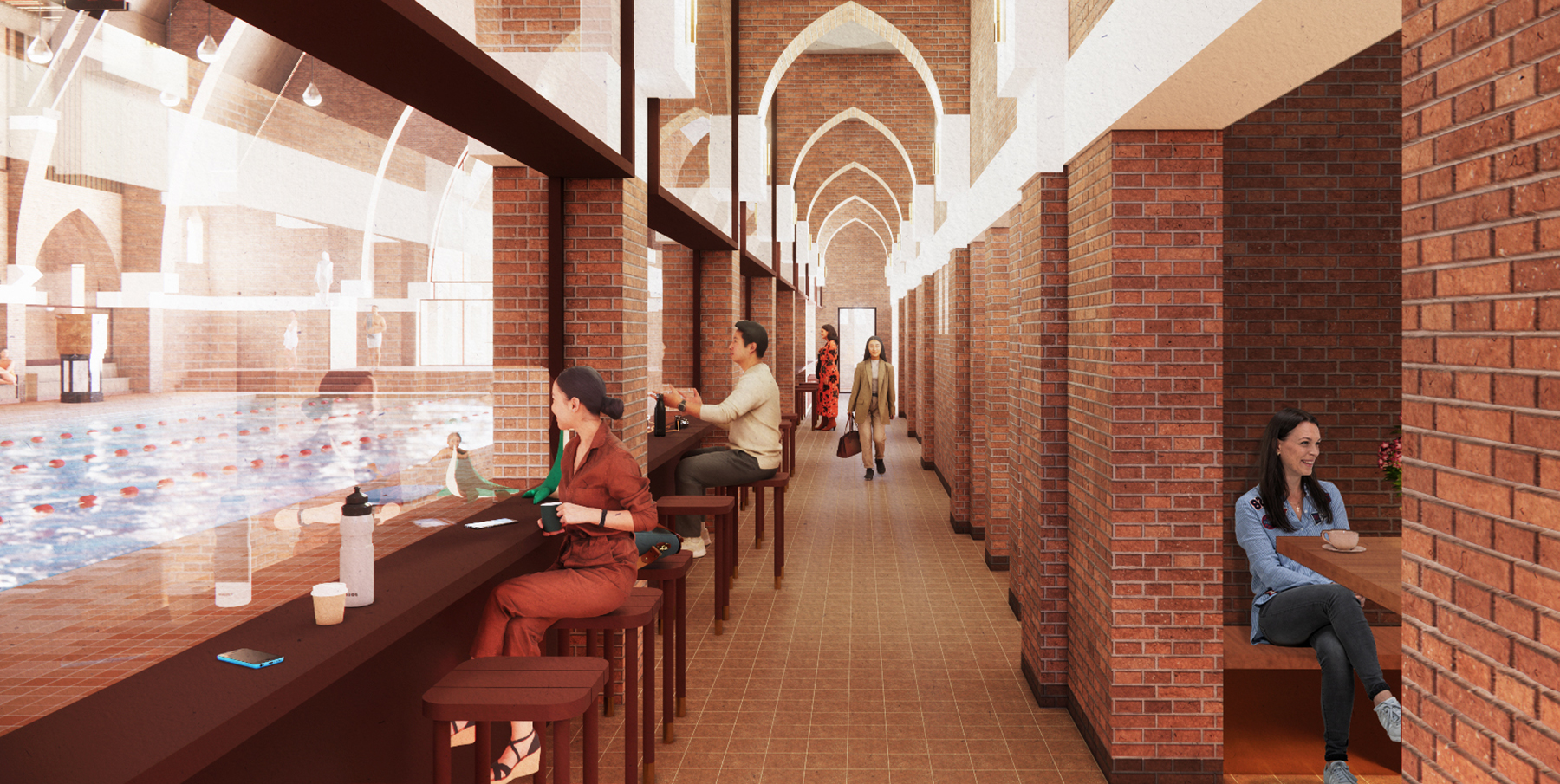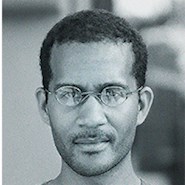 Courtesy of MVRDV
Courtesy of MVRDVThe St. Francis of Assisi Church sits in the center of Heerlen, a small, former coal-mining city in the southeast corner of the Netherlands. The church closed in 2023 after 100 years, and city leaders, who were trying to revitalize their downtown, considered how they might put it to new use.
“The idea came up to maybe see if this old communal vessel that the church used to be to bring people together could actually be reinstated as such,” says Gijs Rikken, associate design director for MVRDV. “But then with a very different function to, in this case, become a pool.”
Further reading:
- Buffalo community comes together to shape, celebrate pedestrian bridge
- ‘Cities of the Future’ shows how civil engineers impact society
- Denver rebuilds historical downtown pedestrian hub
But how to make an intriguing marriage between a house of worship and a public place to swim – nicknamed Holy Water – work? Architects at MVRDV and its partner firm on the project, Zecc Architecten, considered lifting the church to insert a pool that could extend outside the building. Or lifting the pool within the church and inserting a glass floor in the pool to allow people to walk beneath it. But they didn’t want to make a drastic intervention that would compromise the historic fabric of the building.
 Courtesy of MVRDV
Courtesy of MVRDV
It turns out the church basement had all the room they needed. MVRDV and its design and engineering partners will cut out a space on the first floor and drop the 25-meter-by-10-meter pool in the basement.
“In structural terms what we thought about was the church is like a big box; the box with bearing masonry, pillars, and foundation is essential for the structure of building, so what we said was, ‘We’re going to look in the place where (we) have to excavate and bring in new structure, keep as far away from box structure (as possible),’” said Pim Peters, a partner at IMd Structural Engineers, the project’s structural engineer.
Engineers won’t be able to excavate next to the church foundation because of the risk of settlements, which can create cracks in the masonry structure of the church, Peters added.
Raising and lowering the pool
Still, there’s sufficient space below grade to give builders enough room to carve out space for the pool and to place the heating, ventilation, and air-conditioning and other mechanical systems. Keeping the pool on the ground floor also makes the building more accessible for the public.
The key to the design is that the floor of the pool can be raised and lowered – courtesy of six scissor lifts beneath it – making the pool suitable at certain times for adults and at other times for children through its variable water depth. The floor can rise so that it is completely level with the church floor, which will be appropriate for new events that don’t involve the pool.
“Ours is a type that can go up and go down in its entirety, and it is in between the seams of the finish of this floor that the water itself will actually just drain and go down under it,” Rikken said. “So you don’t have to clean out the whole pool or get rid of the water. It will sit there on the water always, and it can go up and the water will just kind of go through it and sit underneath it when it rises.”
The adjustable floor has one more “party trick,” as Rikken puts it: The floor can stop just a few centimeters below the water level, creating a reflecting pool effect. It will be like walking on water, as it were, and when the interior of the church is lit up, the reflection will be akin, Rikken says, to walking “in between two churches, one above you, one below you. That’s going to be a fantastic experience.”
Part of a city revitalization
Rikken says a lot of money for pools is spent on heating the water. “Usually you build a rather compact volume around your pool to make sure that the amount of cubic meters of air is reduced as much as possible,” he explains. But the church interior is more than 20 meters high – a “fantastically large space,” he says – meaning the pool could quickly lose all its heat in such a big space.
 Courtesy of MVRDV
Courtesy of MVRDV
So MRDV and Nelissen, an engineering firm specializing in building physics, together with IMd, devised two schemes to insulate the building – moves expected to drive down energy costs. For starters, interior archways in the church will be sealed off with glass, shrinking the volume of the space; church pews will be used for seating on the other side of the glass archway – allowing the public to watch the swimmers. (The old pulpit will be repurposed as seating for a lifeguard.)
The rest of the installation requires architects and engineers to remove the slate roof off the church, add insulation and photovoltaic panels to the roof, then reinstall it. On the church’s perimeter walls, “we will insert insulation into the cavity of the walls and put window frames on the inside, in front of the existing ones,” Rikken said. “And then we have a complete insulated shell around our pool to be able to keep that heat and that efficiency.”
To carry the extra load, the wooden roof structure is strengthened with minimum steel beams connecting both sides of the wooden truss.
Lastly, most of the church is made of wood, but there are places where steel connections join beams together. But steel is vulnerable to the fumes released by chlorine, so the existing steel will have to be treated with a protective coating or replaced by stainless steel.
The church project is part of a larger revitalization of the city center, including a Roman museum and the renovation of an old movie house. This corner of the Netherlands is dotted with old churches; designers hope this project will inspire others to imagine creative new uses for them.
“Nowadays you see the churches are less visited,” Peters said. “(They’re) not able to be maintained. Some churches, they demolish and build houses. This is a much more elegant way to reuse the church for (a) public building, keep the historic building with a new life. It also has a very positive impact on the environment because a new building is not necessary for the swimming pool.”



